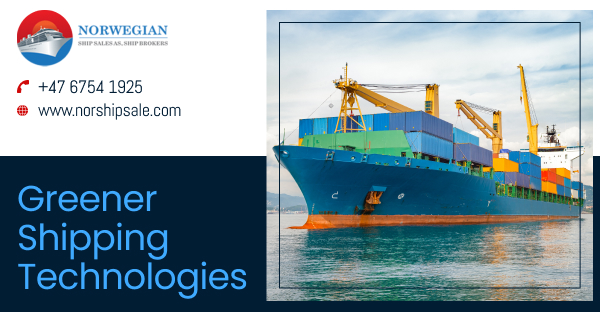The shipping industry is a vital component of the global trade and commerce system. They help various economies in the import and export of food grains, essentials goods, and other manufactured products. But in the last decade, concerns have been growing over the increase in greenhouse gas emissions caused by maritime vessels. A 2020 study revealed that the shipping industry accounts for about 2.89% of the world’s carbon dioxide emissions, contributing to global warming and climate change.
Below, we take a look at some of the eco-friendly technologies emerging in the shipping industry that can work towards building a cleaner, greener planet. When you’re looking at passenger ferries for sale, ships with these greener technologies make a better option.
Slow Steaming
Running your ship vessel at a slower speed than normal helps you to conserve fuel, which is beneficial both environmentally and financially. Lesser fuel used means reduced carbon emissions, which is good for the ecosystem. It also saves on fuel expenses, making it a cost-efficient approach, which is why many shipping companies have already started using this technique. It is a simple, but effective way of reducing your carbon footprint.
More Use of LNG Fuel
LNG refers to Liquefied Natural Gas, and maritime experts have termed it as the future of the shipping industry. Using LNG fuel significantly reduces nitrogen oxide and sulfur oxide emissions. When used in a vessel with modern engine technology, it can reduce up to 23% of greenhouse gas emissions. Studies have also shown that regular usage of LNG fuel leads to optimism engine performance, which in turn, save fuel consumption.
Efficient Hull Design & Paint
While looking at passenger ferries for sale, one must take a careful look at the ship’s hull design as it has a direct impact on the vessel’s performance. Traditionally, ships have always had a round-shaped hull which is not the best at cutting through water. A new innovative design can assist in better propulsion of the ship and also help reduce the fuel consumption. Modern ship vessels employ air-cushion technology, where the front of the ship is designed in such a way that an air cushion forms beneath the hull of the ship while it is motion. This causes lesser friction between the vessel and the water, which results in greater propulsion with lesser fuel burned. It is also important to note that the hull area is applied with the suitable paint, which also helps to reduce the friction and save fuel. An optimum hull design and paint can save up to 15% of carbon emissions.
Optimized Propulsion System
Propulsion systems are used by ships to move through in the water. Designing an optimized propulsion system for a vessel can help in reducing fuel consumption and carbon emissions. One great idea is to use wind propulsion in combination with the conventional propulsion system. It will bring down the greenhouse gas emissions by a significant number.
Low Carbon Fuels
This one is a no brainer really! The best way to cut down your carbon emissions is to use a low-carbon fuel. When you are looking to buy passenger ferries for sale, it is advisable to pick a ship that vessel run on low-carbon fuels.
Conclusion
The shipping industry is trying to adapt to greener technologies. But these decisions are dependent on many factors including the cost of it. We will have to wait before big changes happen.


